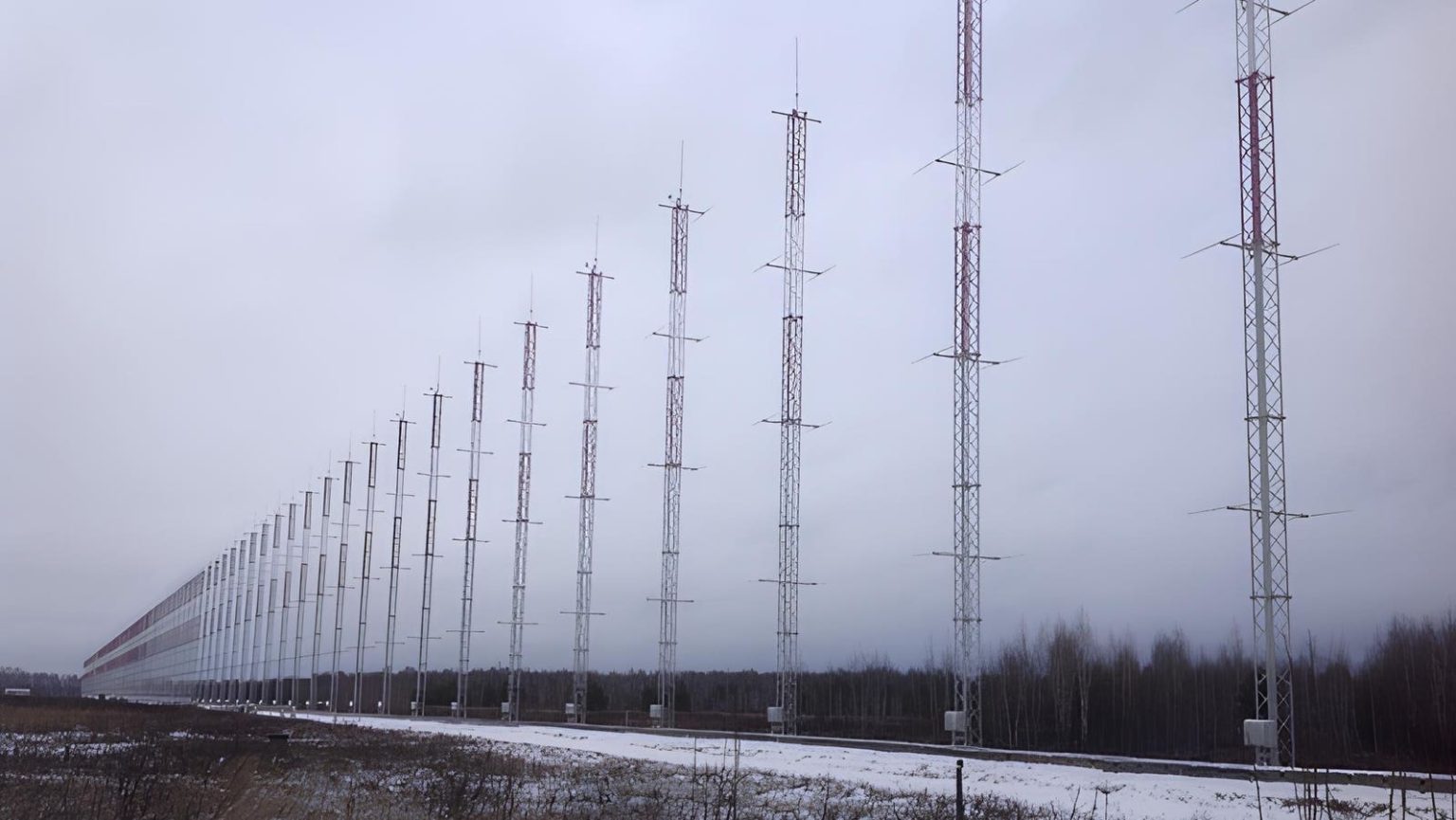The second target for Ukraine’s explosives-laden robotic sports plane is a big one: a 1,900-mile-range over-the-horizon radar in the Russian town of Kovylkino, 370 miles from the front line in Ukraine.
The Ukrainians sortied long-range drones to hit the massive Container OTH radar last week, but reportedly missed. So they tried again today—and at least got close to the sprawling radar installation with its 145 masts, each at least a hundred feet tall.
Video shot from the ground, apparently by Russian civilians, depicts the modified Aeroprakt A-22 sport plane flying toward the Container installation—and then smoke billowing from the apparent blast site.
That the Ukrainians have had to fling more than one drone at the Container underscores how difficult it is to strike a radar that’s hundreds of miles from Ukrainian lines, and whose components are spread out across many acres. Don’t expect the Container to go down easily. Do expect the Ukrainians to keep striking at the unique radar.
The $110-million Container is Russia’s sole over-the-horizon radar that’s pointed to the west to monitor European air space. Other OTH radars point north from the Russian Arctic.
An OTH radar bounces its signal off the ionosphere in order to round the curvature of the Earth. During the Cold War, the world’s nuclear powers deployed OTH radars for early warning of an incoming atomic strike. Today, OTH radars also allow richer countries to spot and track enemy aircraft, missiles and drones from very far away.
While an OTH radar isn’t necessarily as precise as a conventional radar, a conventional radar must operate within a few hundred miles of the front line. That makes it vulnerable to all kinds of enemy fire.
By contrast, an OTH radar should be immune to all but the longest-range strike weapons, which few countries possess. For most of Russia’s 26-month wider war on Ukraine, Russian air-defense commanders could rest easy, knowing their farthest-seeing radar was well beyond the range of Ukrainian munitions.
But Kyiv, with foreign assistance, assigned its best engineers and significant funding to developing whole new classes of long-range strike drone. And starting earlier this year, these drones have ranged as far as 600 miles into Russia to strike air bases, headquarters, oil depots and strategic industries—and now the Container radar.
One of the longest of these long-range strikes took place on April 2, when the Ukrainian military flew at least one autonomous A-22 to Russia’s Alabuga Special Economic Zone industrial campus, 600 miles from the Ukrainian border, and struck part of the facility that produces Iranian-designed Shahed drones for the Kremlin.
The self-flying sport plane is among the best of Ukraine’s 15 or so long-range drone types. It’s big enough to haul hundreds of pounds of explosives as well as enough fuel for a long flight—and, costing just $90,000 for the airframe, it’s cheap.
On a production level, the A-22 drone is scalable. Thus, “we expect that more attacks will be attempted in the future,” the Ukrainian Conflict Intelligence Team stated after analyzing the Alabuga raid, which reportedly injured 14 people and damaged either the drone factory or a nearby dormitory for workers.
That’s exactly what happened two weeks later, when at least one A-22 buzzed toward the Container radar with its explosive payload.
It’s too soon to say whether, and how badly, today’s drone raid damaged the Container. Even toppling one or several receiving towers wouldn’t permanently disable the radar. If the Ukrainians were smart, skilled and lucky in planning and executing the raid, they may have targeted the radar’s control center, without which the towers are useless.
After two raids in the span of a week, it’s safe to say the Ukrainians are determined to suppress if not destroy the Container. It’s clearly part of a wider strategy to make Ukrainian air space safer for Ukrainian warplanes, including those ex-European F-16s that are due to arrive in the coming weeks, while also blinding Russian air defenses to incoming drone raids.
The most dramatic phase of that counter-radar strategy occurred earlier this year, when long-range Ukrainian surface-to-air missiles shot down two rare Russian air force Beriev A-50 radar planes. To cap off that phase, Ukrainian drones targeted the factory in southern Ukraine where Beriev repairs damaged A-50s and builds new ones.
Having eliminated much of Russia’s pre-war inventory of around nine A-50s, the Ukrainians have turned their attention—and their increasingly capable drones—to Russia’s ground-based radars.
Sources:
1. Ukrainian Pravda: https://www.pravda.com.ua/eng/news/2024/04/17/7451634/index.amp
2. TASS: https://tass.com/defense/1132191
3. Conflict Intelligence Team: https://notes.citeam.org/dispatch-apr-1-3-2024
4. @PStyleOne1: https://twitter.com/PStyle0ne1/status/1780644665936445911
Read the full article here





